Abstract
OBJECTIVE: To determine whether state-level parity legislation has led to an increase in utilization of mental health services. DATA SOURCES: Healthcare For Communities (HCC), a multi-site nationally representative study sponsored by the Robert Wood Johnson Foundation that tracks health care system changes for mental health and substance abuse treatment. Information on state-level parity legislation was provided by state offices of the National Alliance for the Mentally Ill (NAMI); local and state market data come from the Area Resource File; information on other health mandates from Blue Cross/Blue Shield. STUDY DESIGN: Two-stage regressions are used to estimate the effect of state parity legislation on use of any mental health services, use of specialty mental health services, and number of specialty visits in the past year. In the first stage, we predicted the probability that a state decides to pass parity legislation as a function of state health care market indicators and previous legislative activity. The fitted probability is used in the second stage to determine the effect of this legislation on access and utilization. PRINCIPAL FINDINGS: State parity legislation is not associated with a significant increase in any of our measures of mental health services utilization. These results are robust to various specifications of the models. CONCLUSIONS: Those states that are able to pass parity legislation do not experience significant increases in the utilization of mental health services. This may be due in part to a loss of coverage for those people most at risk for mental health disorders. The results could be very different, however, if strong federal legislation were passed.
Full text
PDF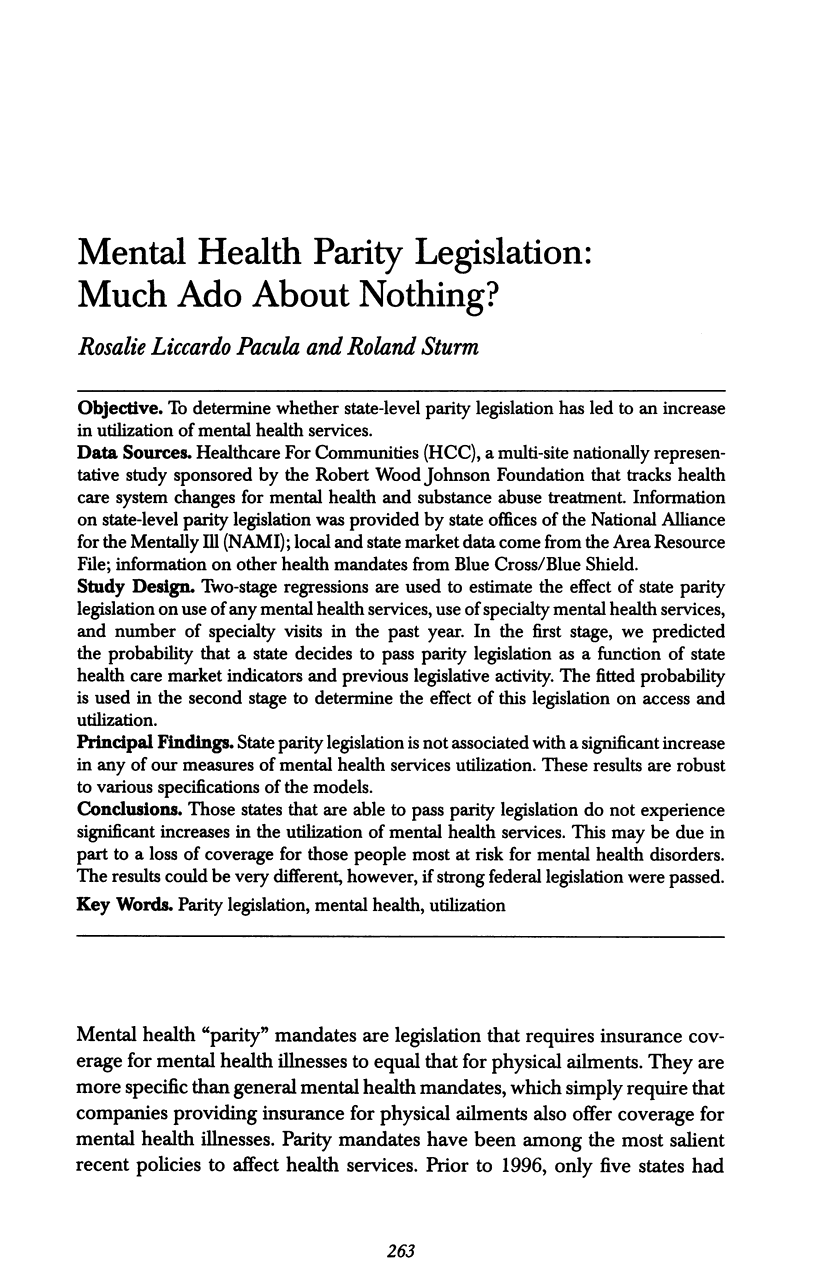
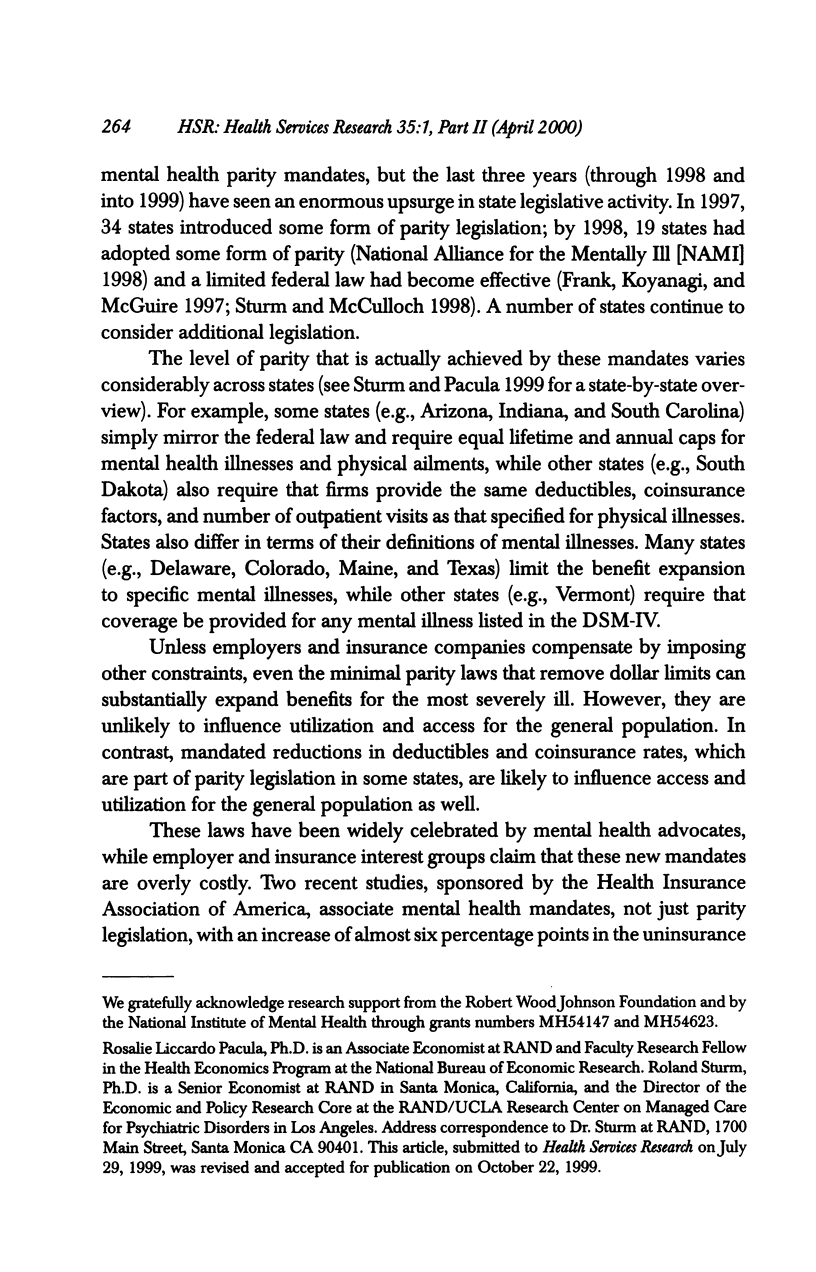
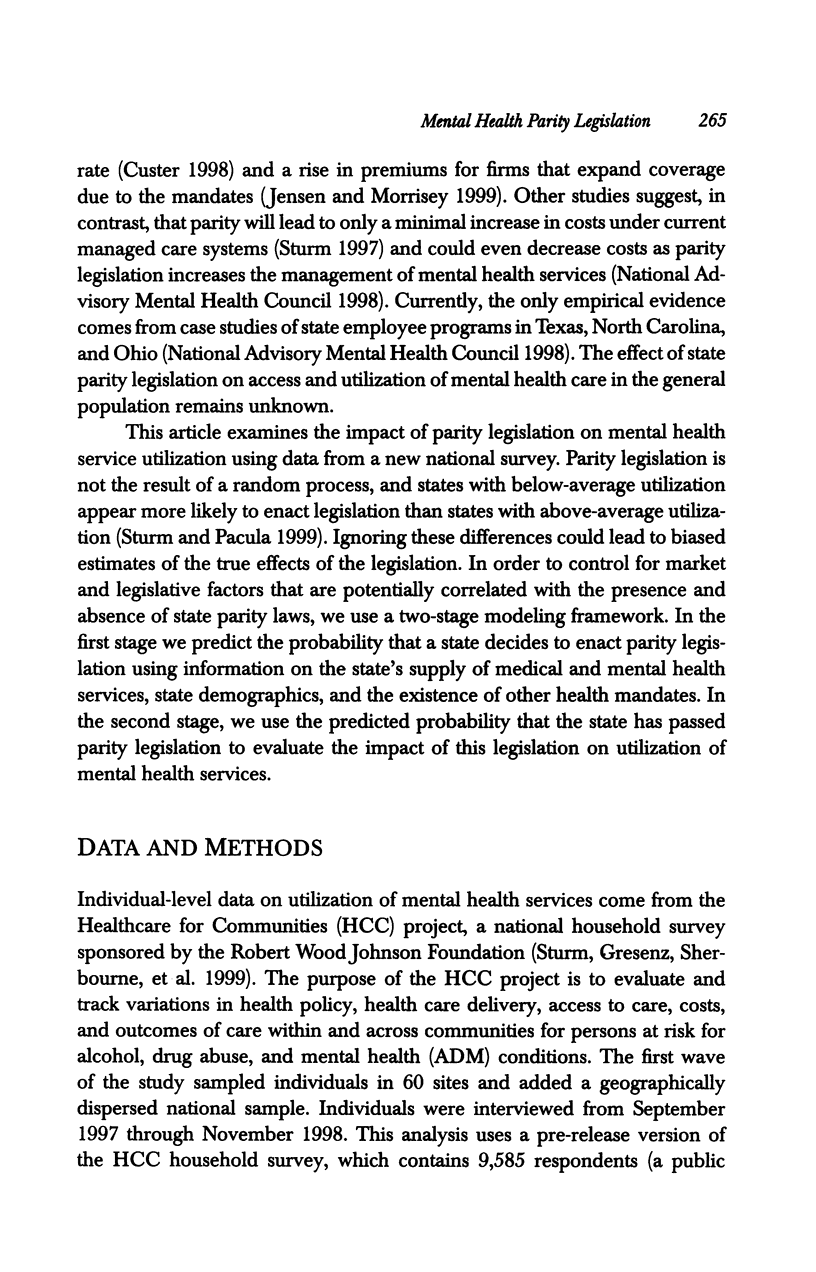


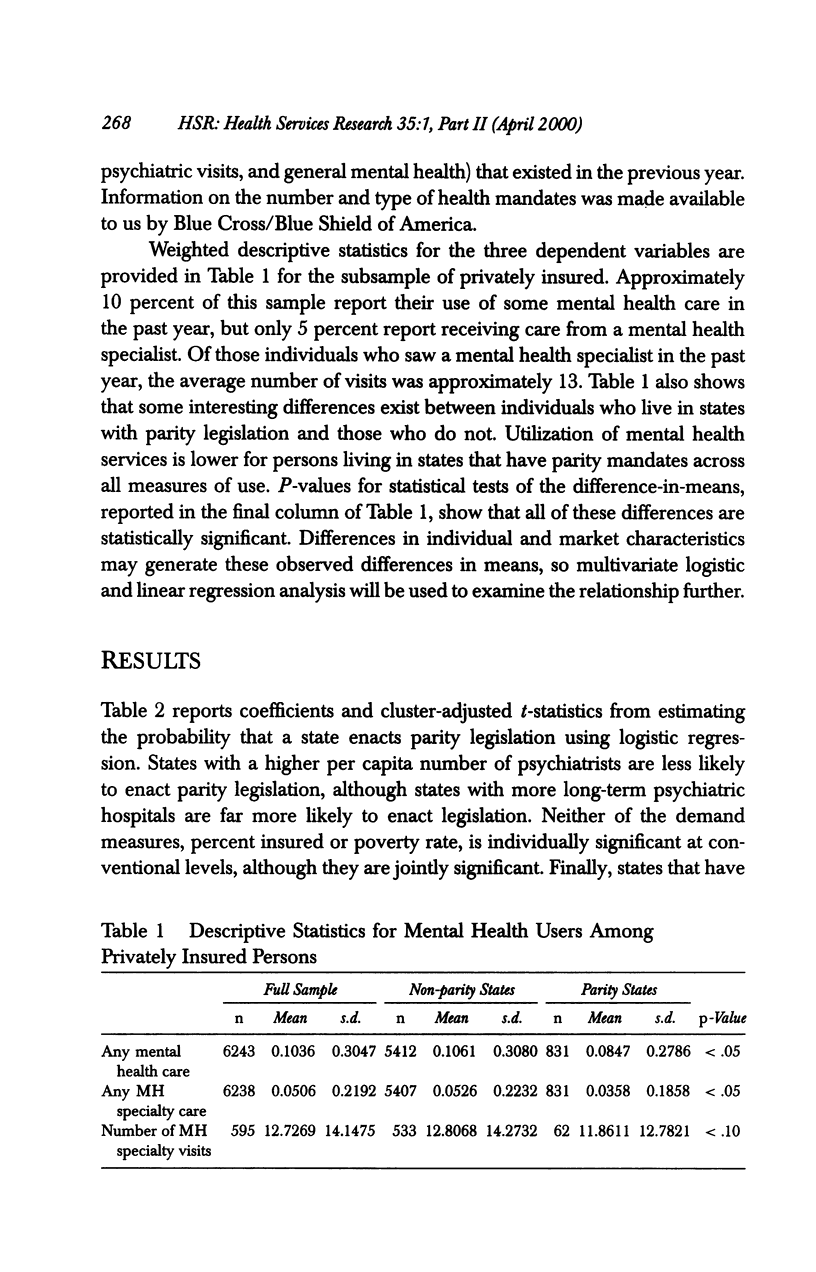
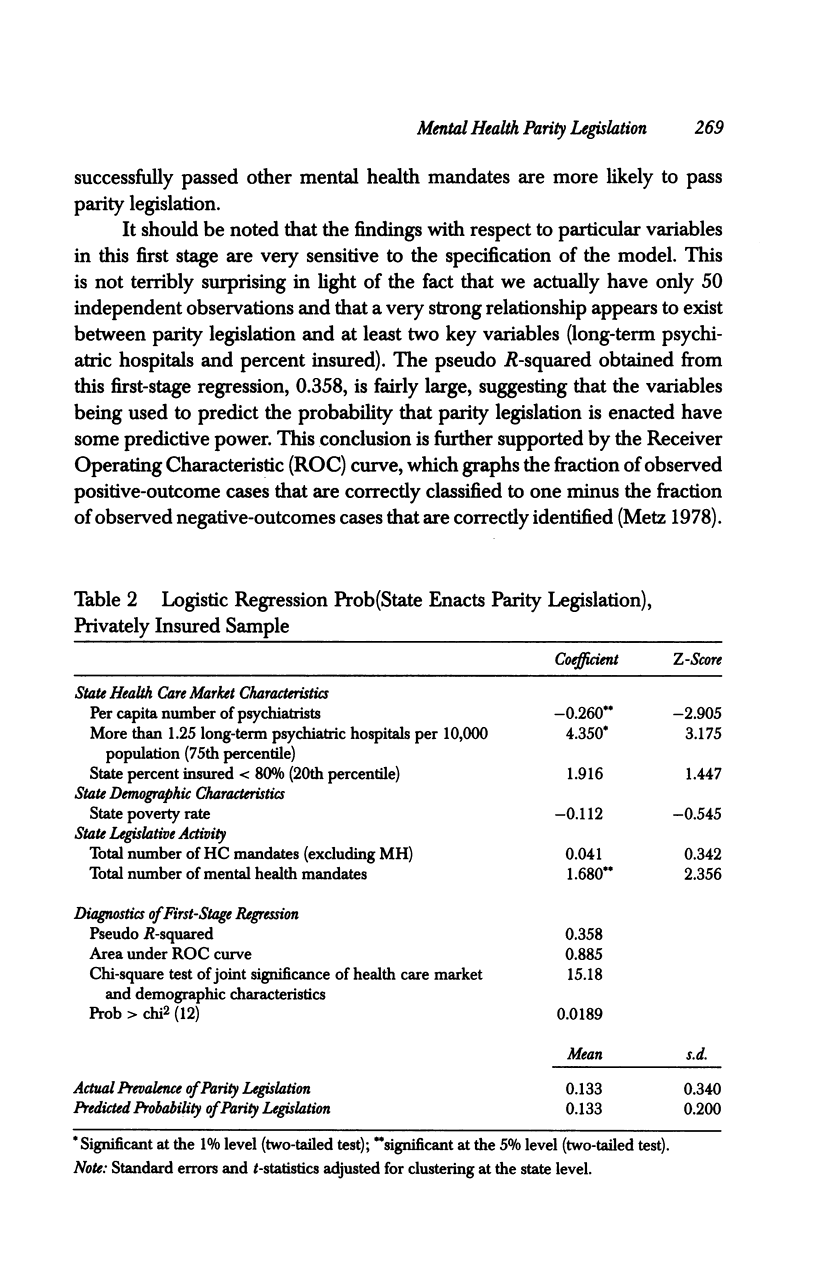

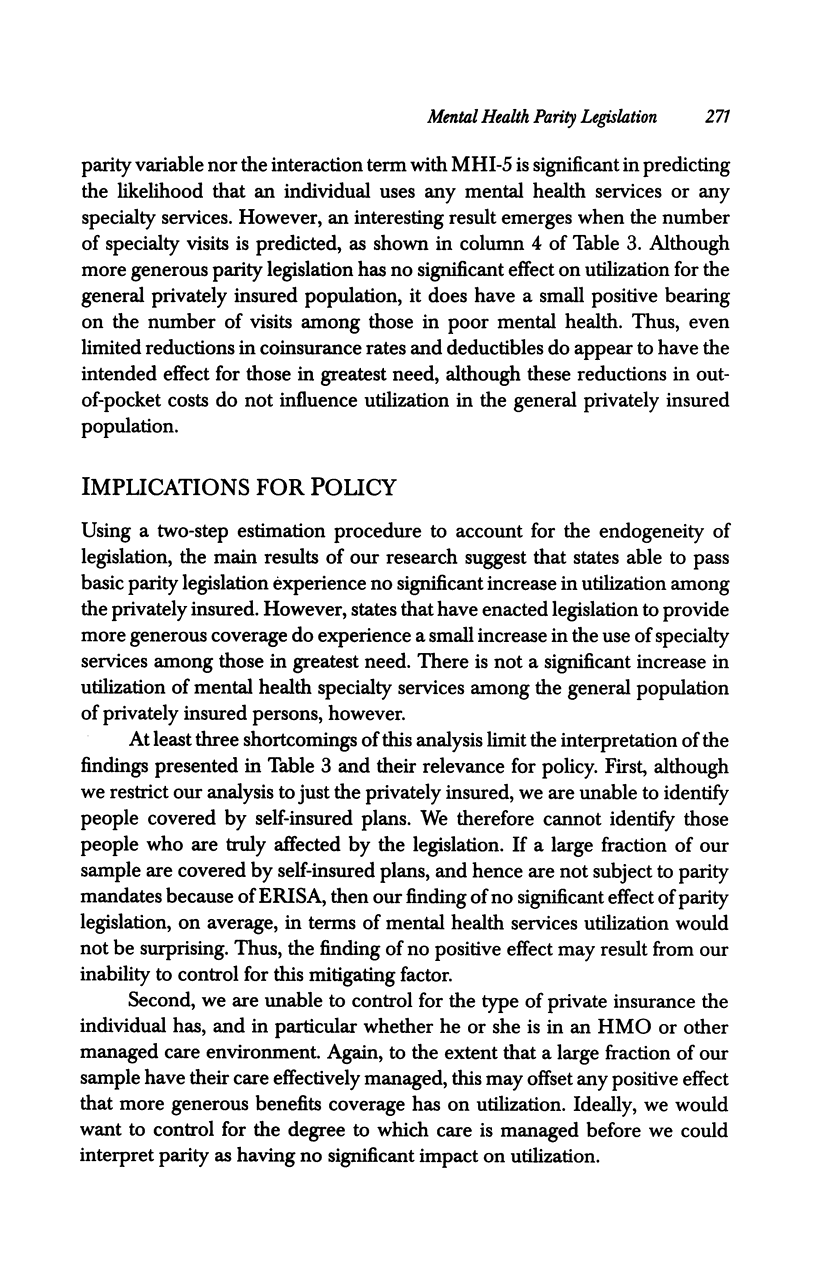

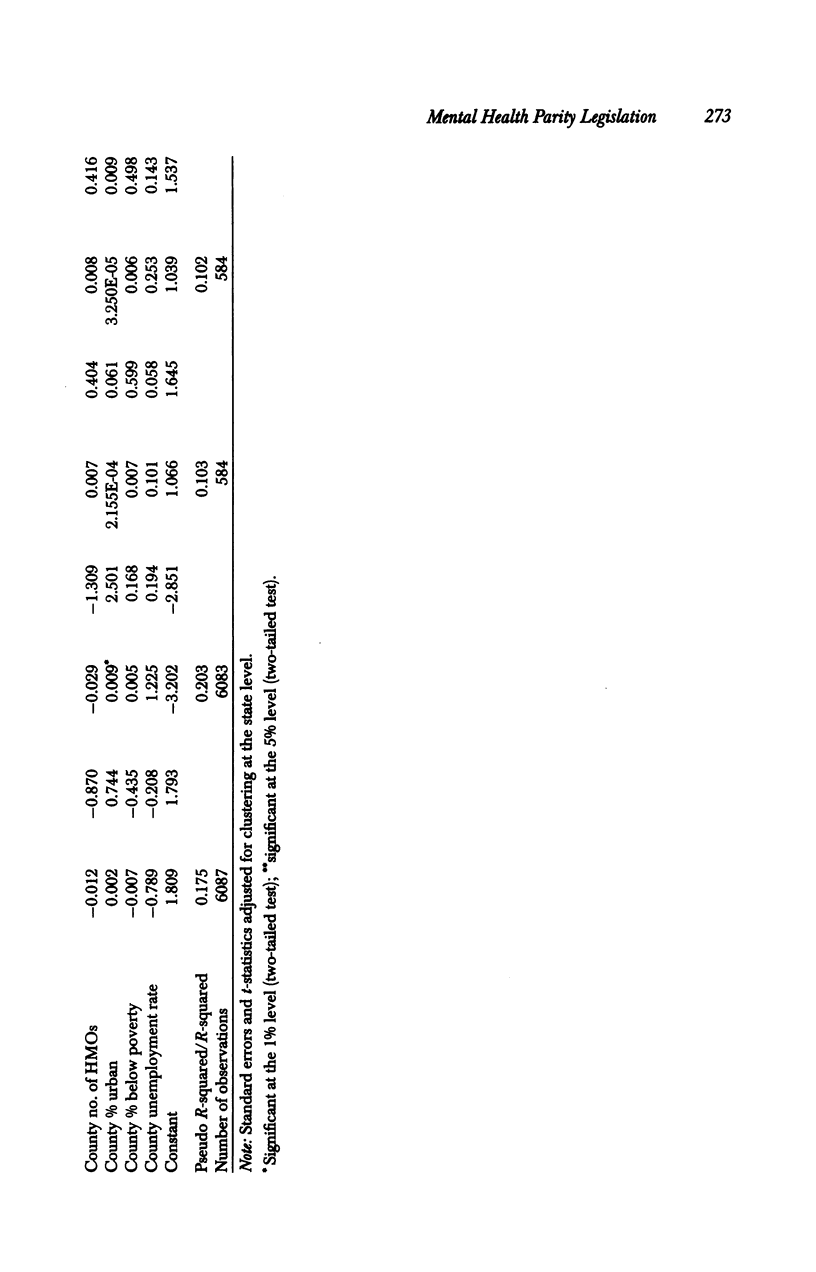
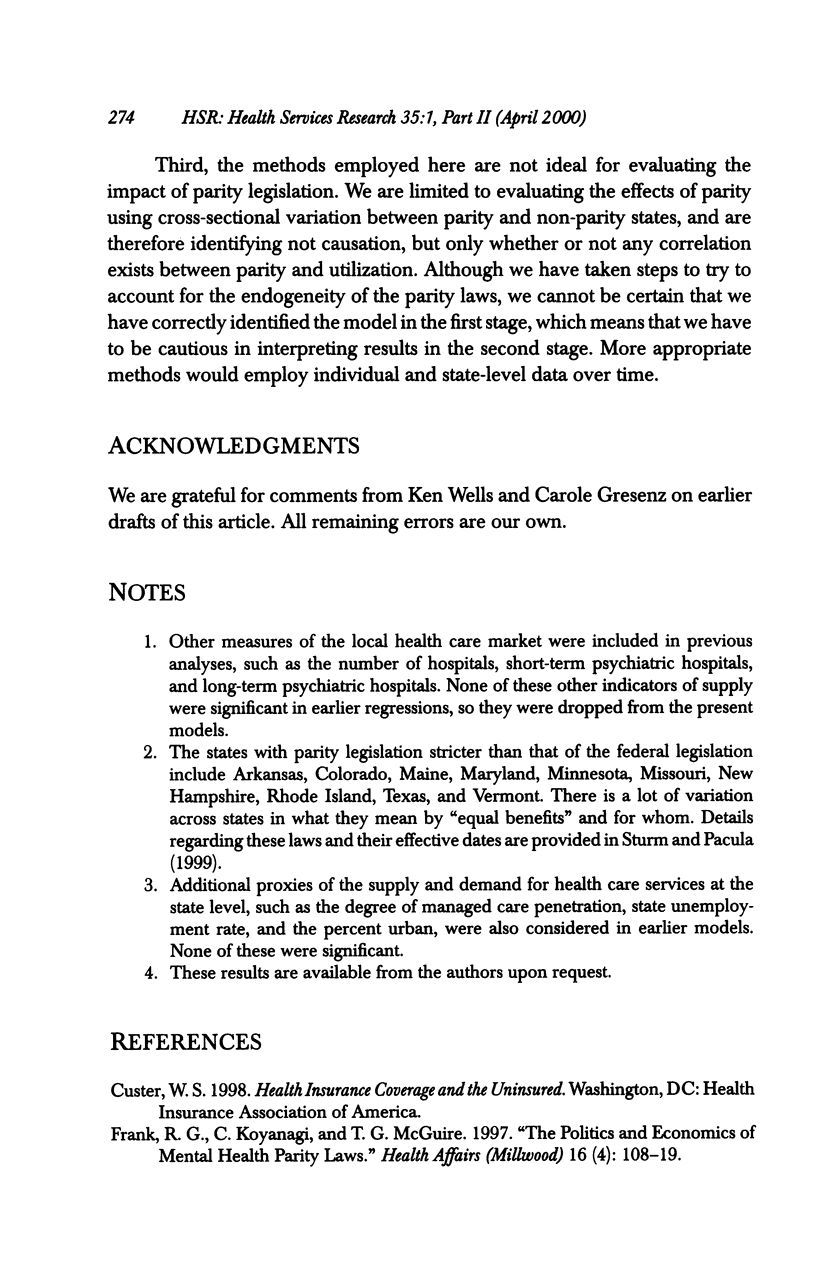
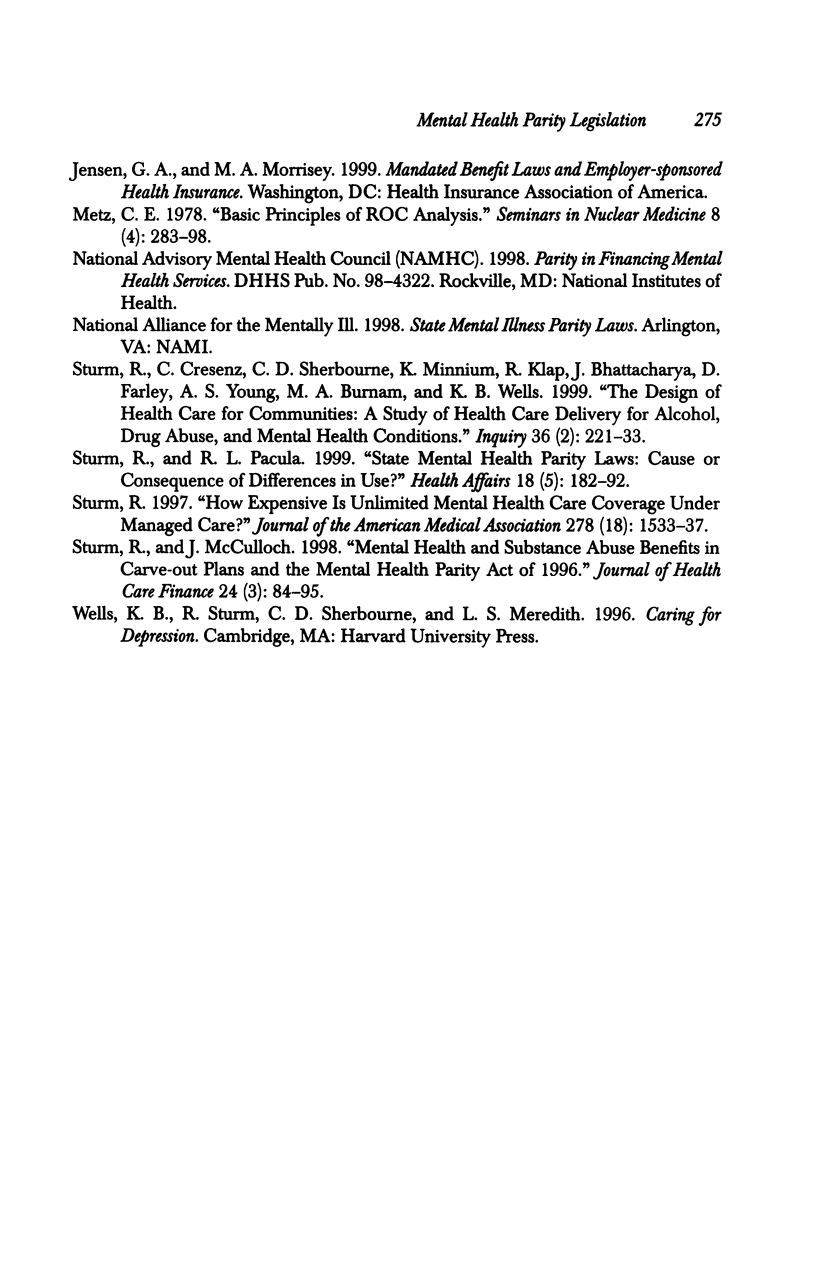
Selected References
These references are in PubMed. This may not be the complete list of references from this article.
- Frank R. G., Koyanagi C., McGuire T. G. The politics and economics of mental health 'parity' laws. Health Aff (Millwood) 1997 Jul-Aug;16(4):108–119. doi: 10.1377/hlthaff.16.4.108. [DOI] [PubMed] [Google Scholar]
- Metz C. E. Basic principles of ROC analysis. Semin Nucl Med. 1978 Oct;8(4):283–298. doi: 10.1016/s0001-2998(78)80014-2. [DOI] [PubMed] [Google Scholar]
- Sturm R., Gresenz C., Sherbourne C., Minnium K., Klap R., Bhattacharya J., Farley D., Young A. S., Burnam M. A., Wells K. B. The design of Healthcare for Communities: a study of health care delivery for alcohol, drug abuse, and mental health conditions. Inquiry. 1999 Summer;36(2):221–233. [PubMed] [Google Scholar]
- Sturm R. How expensive is unlimited mental health care coverage under managed care? JAMA. 1997 Nov 12;278(18):1533–1537. [PubMed] [Google Scholar]
- Sturm R., Pacula R. L. State mental health parity laws: cause or consequence of differences in use? Health Aff (Millwood) 1999 Sep-Oct;18(5):182–192. doi: 10.1377/hlthaff.18.5.182. [DOI] [PubMed] [Google Scholar]


